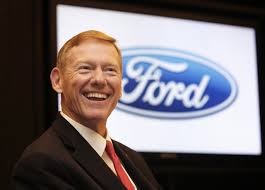
Last September, a former Boeing executive took over the cockpit of the Ford Motor Company. Alan Mulally took over as president and chief executive officer of Ford at a time when the company posted a record US$5.8 billion third-quarter loss.
In April this year, Mulally told reporters at the New York International Auto Show that Ford’s restructuring was going well.
Too much complexity and not enough transparency is what Mulally blames for many of Ford’s problems.
Automotive Industries (AI) spoke to Alan Mulally, and asked him about the challenges of the first six months on the job.
Mulally: It’s been challenging, but we have accomplished quite a bit. I am even more optimistic now than when I got here. First, we had to sit down and decide to deal with reality. We needed to look at the business situation, look at the competition and deal with that. Out of that, came the fundamental four-point plan that we are focused on.
One, we need to restructure ourselves to this lower demand in the near term and the changing model mix. And we need a leadership structure to help implement the strategy. That’s why we changed our organization to focus on our customers around the world even more closely, and to utilize and leverage our assets.
The second priority is to accelerate the product development to make cars and trucks that people really are valuing now, especially with the desire for smaller SUVs, crossovers and cars that are more fuel efficient.
The third priority was to secure the financing so we could implement the first and second priority, which we did. Now, we are focused on spending the money wisely and being in a position to pay it back.
The fourth priority is to take working together to another level to performance. When it comes to working together, we’re 12-18 months ahead of where I thought we’d be.
AI: Was it difficult for an ex-Boeing executive to take over an ailing giant like Ford?
Mulally: The day I arrived you could feel the similarities between Ford and Boeing. Ford was started in 1903 to provide safe and efficient transportation for everybody. Boeing was started in 1916 as a very safe and efficient transportation for people around the world. Both are American icons.
They are similar products with similar customers. Both companies require you to have a point of view about the future. Both industries are global and usually they are growing or slowing down in different parts of the world. So having a business plan that deals with that cyclicality is really important.
We are always looking at advanced technologies. And I think another similarity is the quality of the talent. The design, engineering, manufacturing, finance, and communication – everybody must be working together to create this kind of a business.
AI: When you first took over as head of Ford people questioned your credentials for the job – what would you say to them today?
Mulally: The challenges Ford Motor Company faces are very similar to the challenges I faced and overcame at Boeing. Both companies require their leaders to be comfortable with large-scale system integration, meaning these are sophisticated, complex vehicles and we manage the creation of them, the design, the manufacturing, the management of the supply chain worldwide.
Both require a lean global enterprise. We both require a team operating in a working together way. You must have a plan, include everybody, consistently share the status of delivering on the plan and then work together to deliver an even better plan the following year.
AI: Is the Way Forward restructuring plan going according to plan?
Mulally: Mark Fields, Ford’s president of the Americas and his team are focusing on all the right things. They have had to make some tough decisions and are working hard to deliver the plan and they are hitting most of their targets.
AI: How are you tackling the issue of quality?
Mulally: JD Power is showing that we are beating the perennial leaders, Toyota and Honda, when it comes to initial quality now. Consumer Reports is recommending our vehicles above the competition. We are hitting our targets for quality and we are determined to stay focused.
When it comes to quality, what we actually have is a consumer perception problem. If you talk to older people today, they will tell you that Ford has come a long way, that our quality today is phenomenal because it is what they remember. If you talk to some of the younger customers who have been making decisions between Japanese cars and American cars, they have a more recent history. The Japanese cars have been selling for years based on being more reliable and easier to maintain. Those customers think that is still the case.
The data says that Ford is very, very competitive now in quality and reliability. So we are working on that issue too.
AI: Will Ford be able to churn out new products faster? And how will you manage to effect this change?
Mulally: Our second priority is to accelerate the development of new cars and trucks that customers prefer, addressing higher fuel prices and even better value. Not only has Ford been the leader in big SUVs and trucks for 35 years, but they also chose to start investing again in a full family of vehicles and to start making some good cars.
Now we’re going to stay focused on the product line and we will continuously improve it every year. We will also better leverage our global assets. You can imagine more models means more flexible manufacturing in each facility. This is exciting!











More Stories
Exploring E2C DX9660 with Aatif Ahmed Misbah, on Cabot Corporation’s sustainable innovations and performance advancements in the automotive industry
Blue Yonder accelerates automotive innovation with strategic flexis acquisition for supply chain transformation
Contechs appoints Christopher Hilts as US Head of Business Development